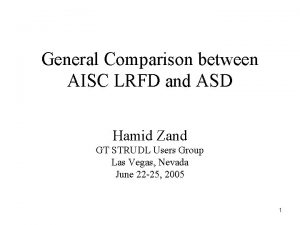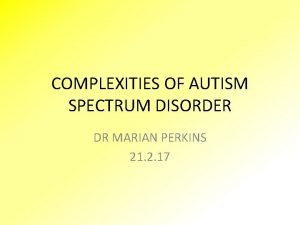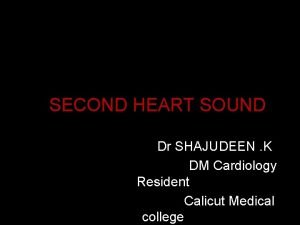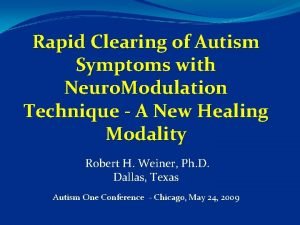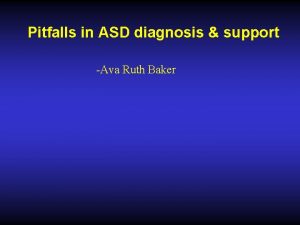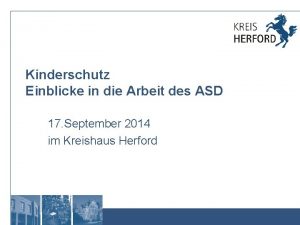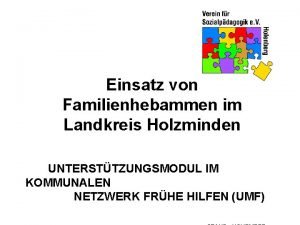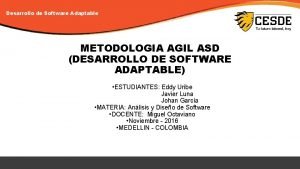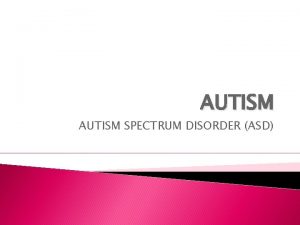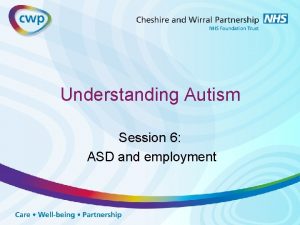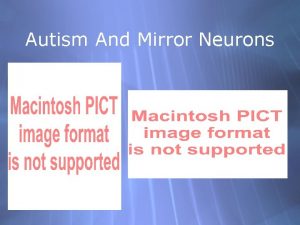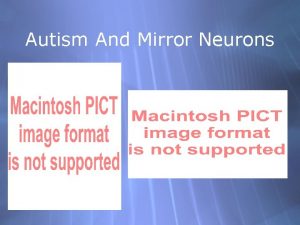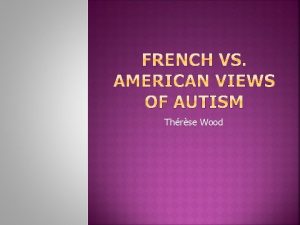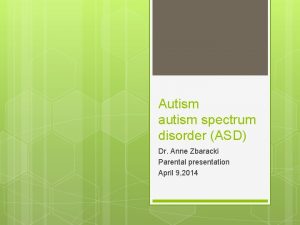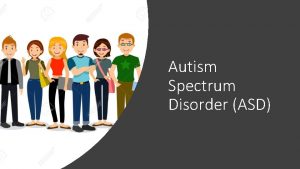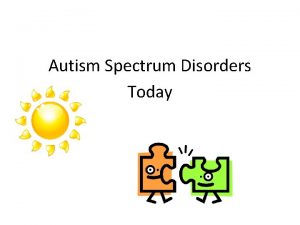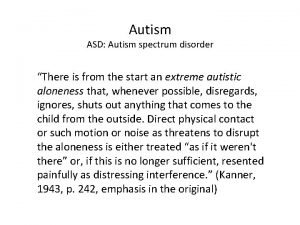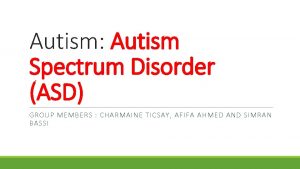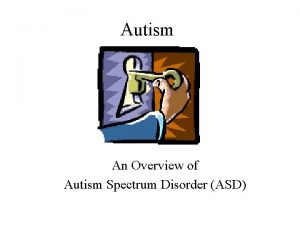AUTISM AND COMMUNICATION WHAT IS AUTISM OR ASD













- Slides: 13

AUTISM AND COMMUNICATION

WHAT IS AUTISM OR ASD? DISCUSS THE FOLLOWING QUESTIONS AS A CLASS What do you know about Autism… §What is it? §Who does it affect? §How do you get it? §What things affect a student with ASD?

WHAT IS AUTISM OR ASD? What is it? §Neurological disorder §Affects person’s brain and the way their body works Who does it affect? §No two people will have the same symptoms/characteristics §The brain uses “energy” differently §It does NOT affect individuals of specific race, religion, economic status or where you live § Communication or verbalizing §It is more common in boys than girls oneself is difficult

WHAT IS AUTISM OR ASD? How do you get it? What things affect a student with ASD? §It is NOT a disease or contagious §Communication difficulties §Unknown but scientist are still researching §Making friends §A study from Autism Speaks MSSNG, March 6, 2017: identifies omitted letters in MSSNG (pronounced "missing") genomic database which identified 61 genetic variations affecting autism risk. §Difficulties understanding what is going on around them (setting) §Following directions §Loud noises, smells, lights, crowds, etc. §Sensory example: Wearing a pair of gloves or holding a pencil may be hard because of the way it feels on their skin.

LIVING WITH AUTISM - KY'S STORY As you watch the video, try and put yourself in the student’s “shoes”. Try and relate to the student’s thoughts and feelings. https: //www. youtube. com/watch? v=p 4 J 59 GY 8 DR 4

LIVING WITH AUTISM - KY'S STORY 1. Three main challenges a person with ASD has are… 1. 2. 3. Communication Social Interactions Behavior 2. Think of your own social interactions, social fears and worries. How do you feel when thinking of these? How do you think Ky or other students with ASD feel when they are put into social situations/interactions?

WE ARE ALL UNIQUE IN OUR OWN WAY! LET’S DISCUSS SOME THINGS UNIQUE TO §Routines – a student may sit at the same spot everyday for lunch or walk the ASD… same route to class each day §Schedule changes may be difficult as it is a disruption in their “routine” §Limited eye contact with individual they are talking with §Concrete/literal thinkers and have a hard time understanding sarcasm and jokes §Do NOT realize or know how to protect themselves when they are being bullied or teased §Misunderstand rules or directions give to them §Unaware of others feelings §Overwhelmed/sensory processing difficulties by noises, crowded hallways, fluorescent lights, touch §Unable to interpret facial expressions or make connections with others

HOW CAN WE COMMUNICATE WITH OUR ASD PEERS? §When asked a question allow processing time or extra time for the ASD student to think about what was asked and then develop an answer. §Use “concrete” or direct words/directions: § “stand still” instead of “don’t move” § “use quite words” instead of “stop yelling” §Try not to use sarcasm § “take a chill pill” § “cool your jets” § “hold your horses” §Reword a question by using few and simple words §Get to know their likes and dislikes, strengths and weakness to strike up a conversation

DIFFICULTIES ASD STUDENT MAY HAVE COMMUNICATING §Staying on topic of the discussion. §Starting a conversation §Saying something that sounds rude. The student may be being honest but is unable to phrase it in a nice way. §Turn taking in conversations §Beginning and endings of conversations: enter or end conversation inappropriately

HOW CAN I BE A FRIEND TO MY ASD PEERS? Class discussion…

HOW CAN I BE A FRIEND TO MY ASD PEERS? EXAMPLES… §Join your friend in activities that interest him or her §Talk to them like you would to any other friend: age-appropriate manner §Be patient §Be understanding and respect your friend’s differences §Give your friend extra time to answer you §Stand up for your friend §Use their strengths, talents and interests to help with communication, school work and other activities §Invite your friend to join you at lunch, group activities, and social outings

ACTIVITY §Students will be given a puzzle piece §Write one word or one phrase that best describes one of the following… § Being a good friend § Positive ways to communicate §Decorate your puzzle piece §Turn your puzzle piece into your teacher §Teachers please place the puzzle pieces into Mrs. St. Onge’s mailbox

AMS will be LIGHTING it up BLUE in honor of AUTISM AWARENESS ON Thursday, May 3 rd, 2018. Please wear BLUE to show your
